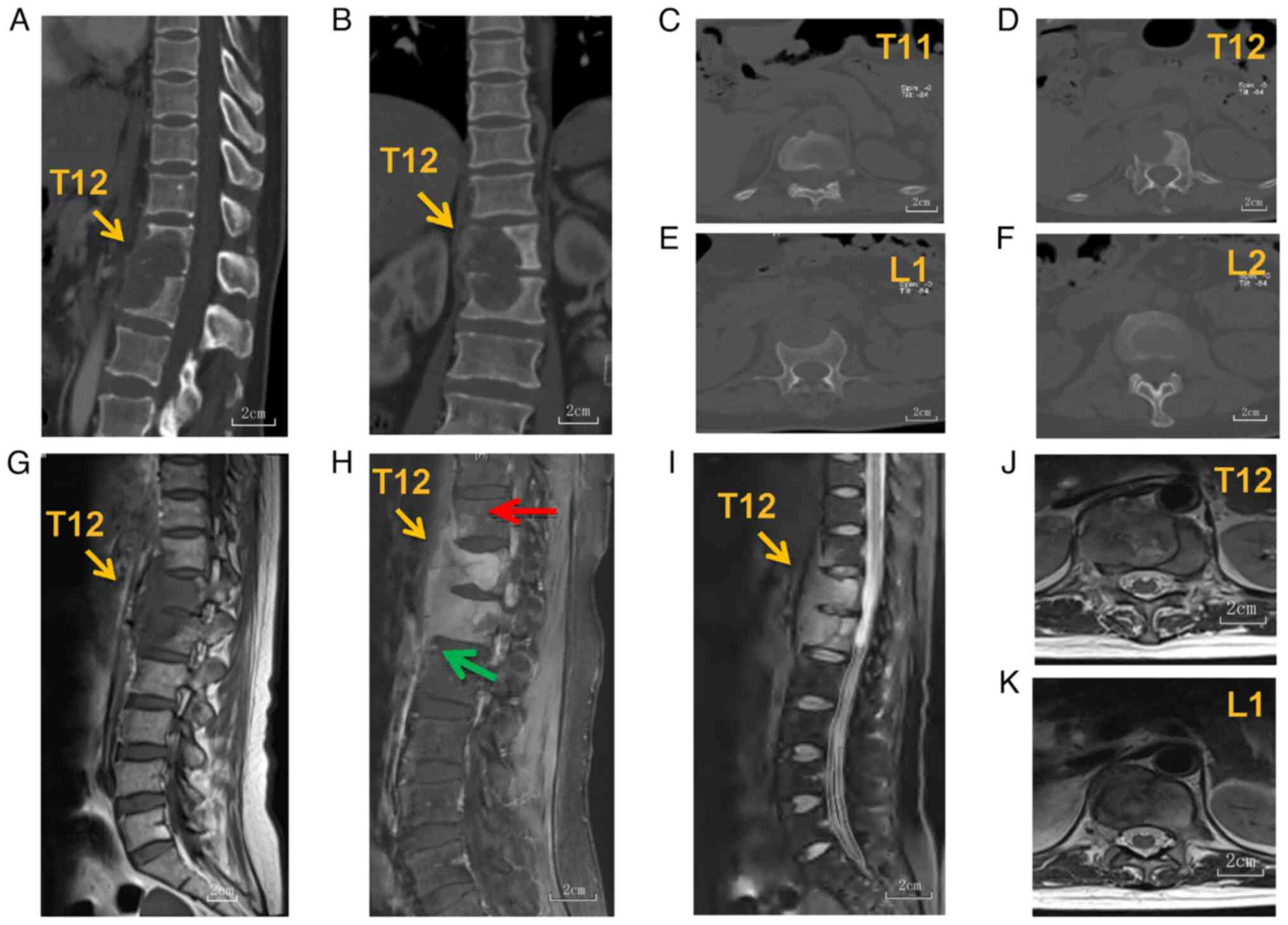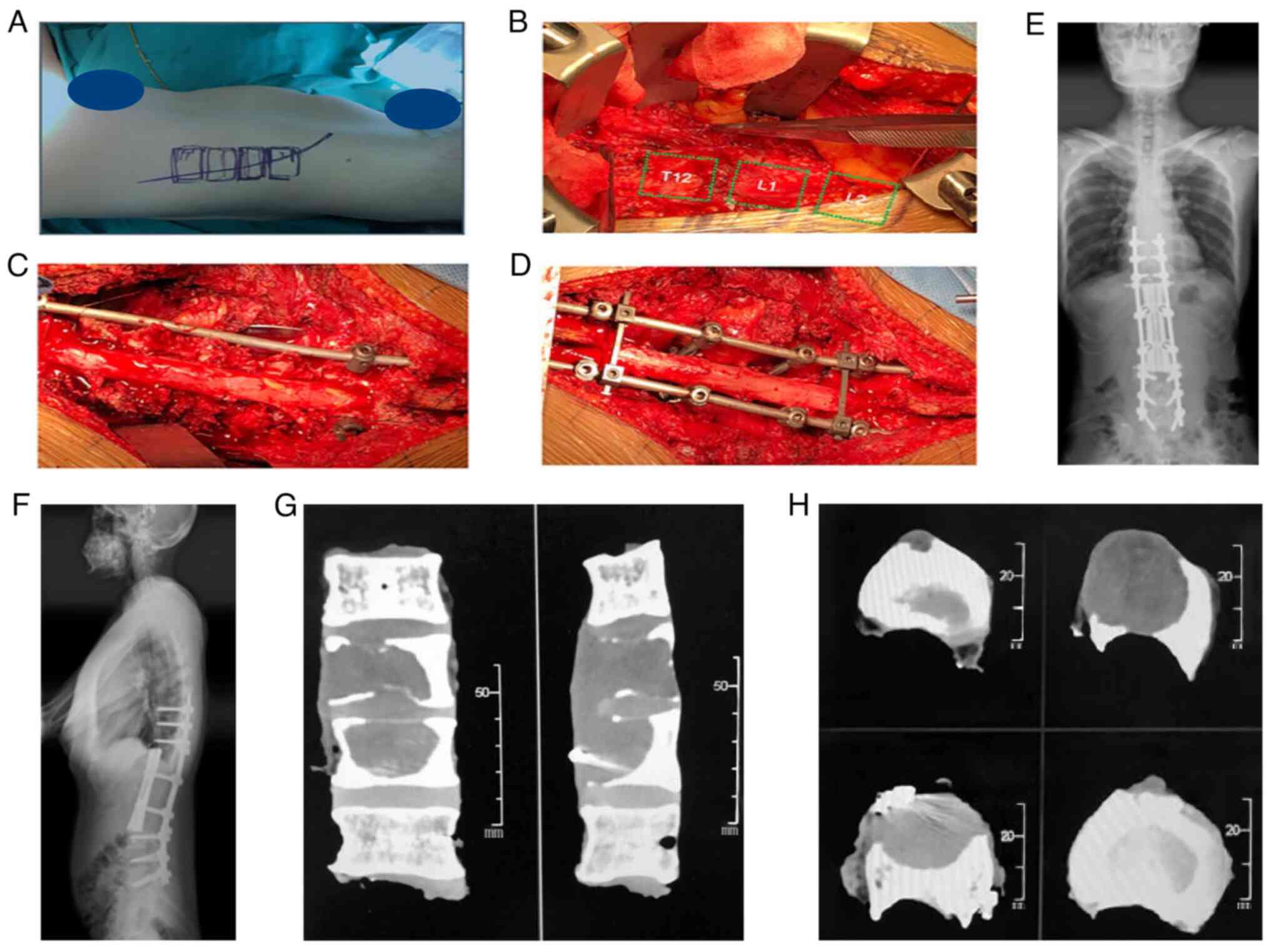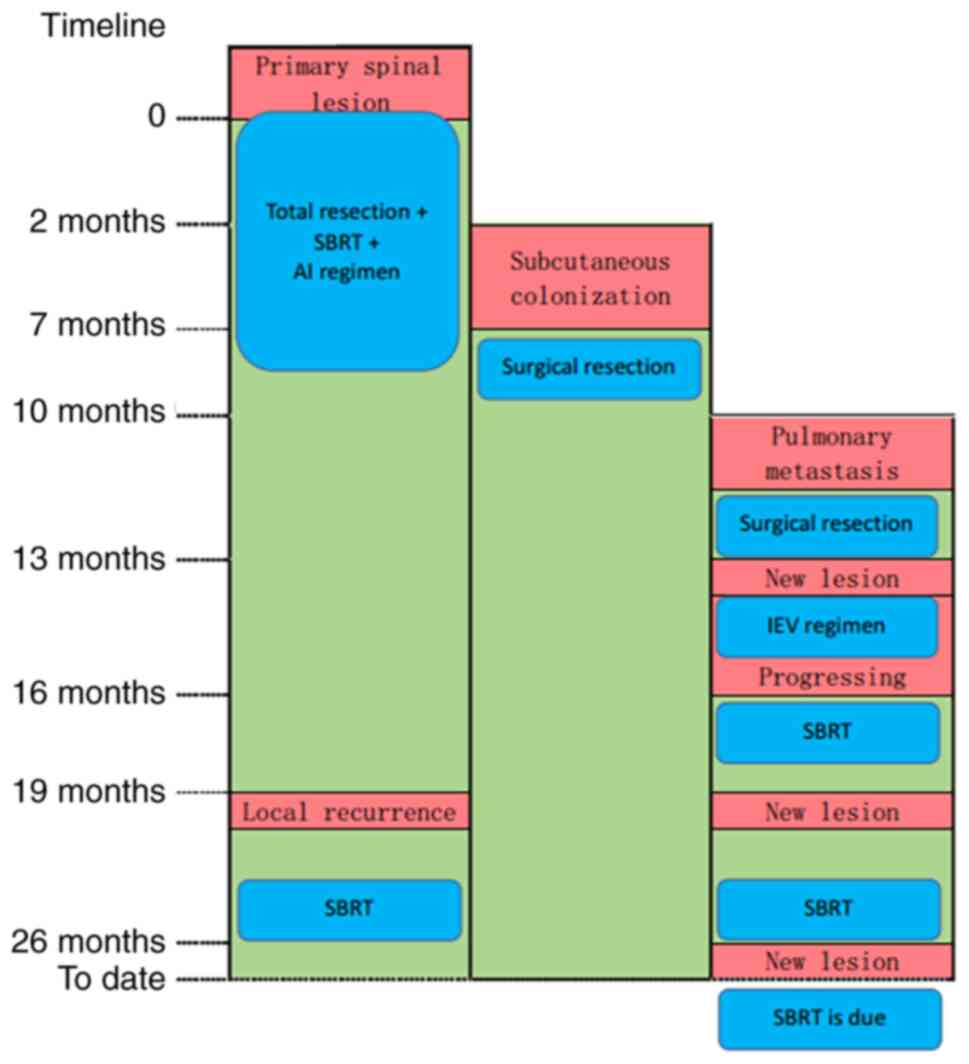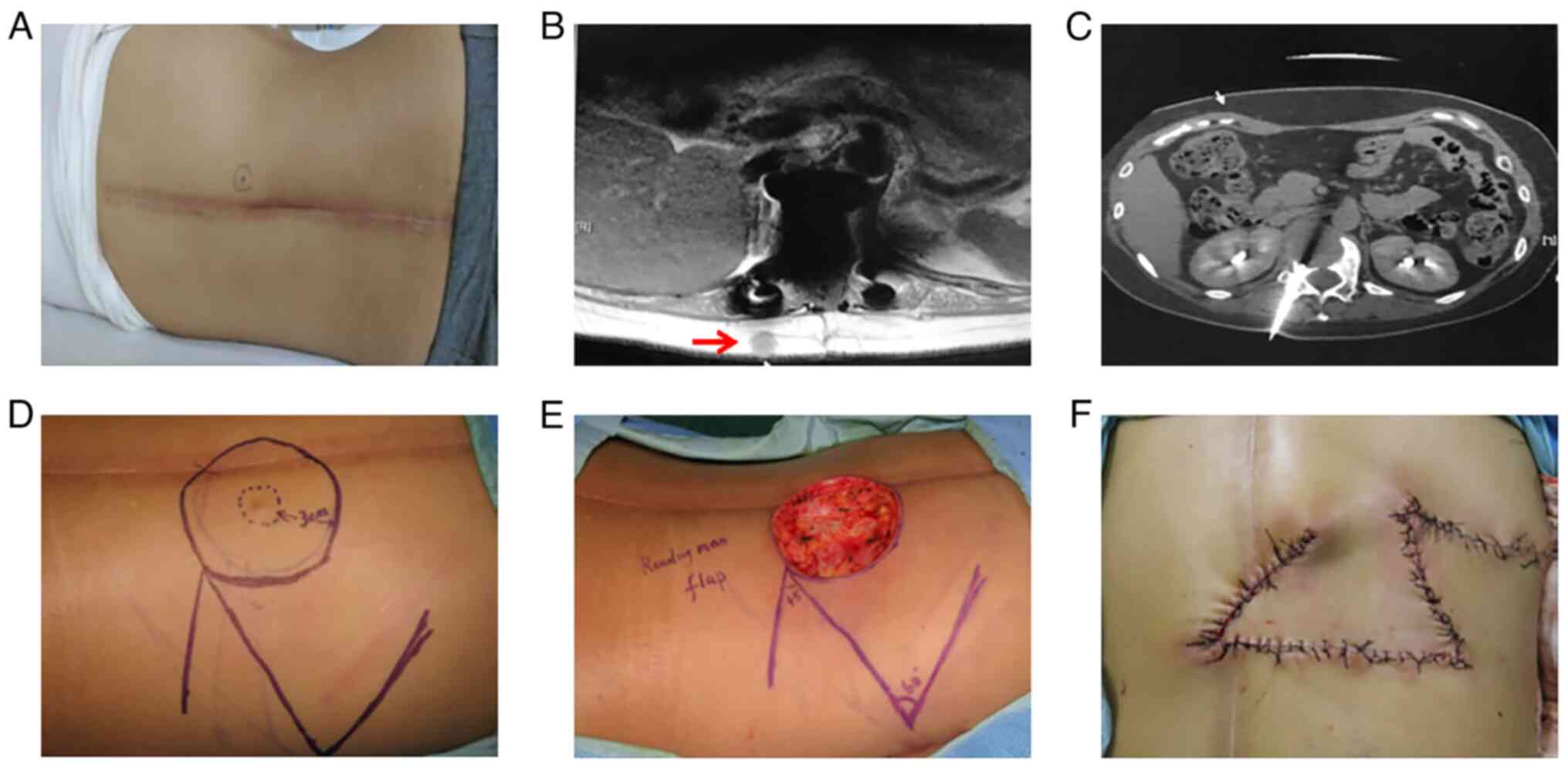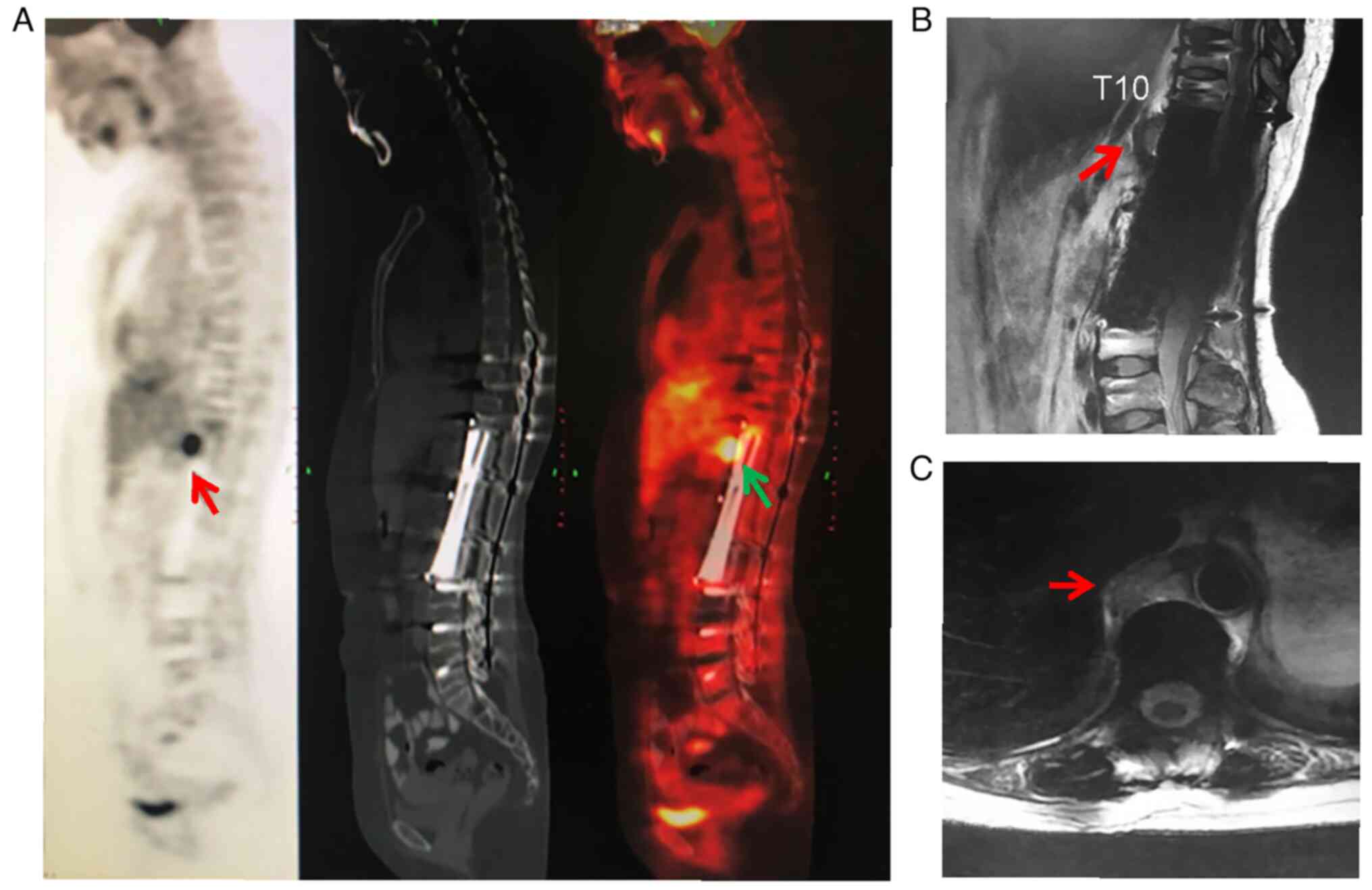|
1
|
Bompas E, Campion L, Italiano A, Le Cesne
A, Chevreau C, Isambert N, Toulmonde M, Mir O, Ray-Coquard I,
Piperno-Neumann S, et al: Outcome of 449 adult patients with
rhabdomyosarcoma: An observational ambispective nationwide study.
Cancer Med. 7:4023–4035. 2018. View Article : Google Scholar : PubMed/NCBI
|
|
2
|
Kaseb H, Kuhn J and Babiker HM:
Rhabdomyosarcoma. In: StatPearls [Internet]. Treasure Island (FL):
StatPearls Publishing. 2022.
|
|
3
|
Wang T, Gao X, Yang J, Guo W, Wu Z, Tang
L, Cao S, Cai X, Liu T, Jia Q and Xiao J: Treatment strategies and
outcomes for spinal rhabdomyosarcoma: A series of 11 cases in a
single center and review of the literature. Clin Neurol Neurosurg.
192:1057292020. View Article : Google Scholar : PubMed/NCBI
|
|
4
|
Gurria JP and Dasgupta R: Rhabdomyosarcoma
and extraosseous ewing sarcoma. Children (Basel).
5:1652018.PubMed/NCBI
|
|
5
|
Raney RB, Maurer HM, Anderson JR, Andrassy
RJ, Donaldson SS, Qualman SJ, Wharam MD, Wiener ES and Crist WM:
The intergroup rhabdomyosarcoma study group (IRSG): Major lessons
from the IRS-I through IRS-IV studies as background for the current
IRS-V treatment protocols. Sarcoma. 5:9–15. 2001. View Article : Google Scholar : PubMed/NCBI
|
|
6
|
Spreafico F, Ferrari A, Mascarin M,
Collini P, Morosi C, Biasoni D, Biassoni V, Schiavello E, Gandola
L, Gattuso G, et al: Wilms tumor, medulloblastoma, and
rhabdomyosarcoma in adult patients: lessons learned from the
pediatric experience. Cancer Metastasis Rev. 38:683–694. 2019.
View Article : Google Scholar : PubMed/NCBI
|
|
7
|
Sultan I, Qaddoumi I, Yaser S,
Rodriguez-Galindo C and Ferrari A: Comparing adult and pediatric
rhabdomyosarcoma in the surveillance, epidemiology and end results
program, 1973 to 2005: An analysis of 2,600 patients. J Clin Oncol.
27:3391–3397. 2009. View Article : Google Scholar : PubMed/NCBI
|
|
8
|
Wei F, Li Z, Liu Z, Liu X, Jiang L, Yu M,
Xu N, Wu F, Dang L, Zhou H, et al: Upper cervical spine
reconstruction using customized 3D-printed vertebral body in 9
patients with primary tumors involving C2. Ann Transl Med.
8:3322020. View Article : Google Scholar : PubMed/NCBI
|
|
9
|
Osborn VW, Lee A and Yamada Y:
Stereotactic body radiation therapy for spinal malignancies.
Technol Cancer Res Treat. 17:15330338188023042018. View Article : Google Scholar : PubMed/NCBI
|
|
10
|
Ladra MM, Szymonifka JD, Mahajan A,
Friedmann AM, Yong Yeap B, Goebel CP, MacDonald SM, Grosshans DR,
Rodriguez-Galindo C, Marcus KJ, et al: Preliminary results of a
phase II trial of proton radiotherapy for pediatric
rhabdomyosarcoma. J Clin Oncol. 32:3762–3770. 2014. View Article : Google Scholar : PubMed/NCBI
|
|
11
|
Gong Y, Xu L, Zhuang H, Jiang L, Wei F,
Liu Z, Li Y, Yu M, Ni K and Liu X: Efficacy and safety of different
fractions in stereotactic body radiotherapy for spinal metastases:
A systematic review. Cancer Med. 8:6176–6184. 2019. View Article : Google Scholar : PubMed/NCBI
|
|
12
|
Arndt CA, Stoner JA, Hawkins DS, Rodeberg
DA, Hayes-Jordan AA, Paidas CN, Parham DM, Teot LA, Wharam MD,
Breneman JC, et al: Vincristine, actinomycin, and cyclophosphamide
compared with vincristine, actinomycin, and cyclophosphamide
alternating with vincristine, topotecan, and cyclophosphamide for
intermediate-risk rhabdomyosarcoma: Children's oncology group study
D9803. J Clin Oncol. 27:5182–5188. 2009. View Article : Google Scholar : PubMed/NCBI
|
|
13
|
Arndt CA, Hawkins DS, Meyer WH, Sencer SF,
Neglia JP and Anderson JR: Comparison of results of a pilot study
of alternating vincristine/doxorubicin/cyclophosphamide and
etoposide/ifosfamide with IRS-IV in intermediate risk
rhabdomyosarcoma: A report from the children's oncology group.
Pediatr Blood Cancer. 50:33–36. 2008. View Article : Google Scholar : PubMed/NCBI
|
|
14
|
Walterhouse DO, Pappo AS, Meza JL,
Breneman JC, Hayes-Jordan A, Parham DM, Cripe TP, Anderson JR,
Meyer WH and Hawkins DS: Reduction of cyclophosphamide dose for
patients with subset 2 low-risk rhabdomyosarcoma is associated with
an increased risk of recurrence: A report from the soft tissue
sarcoma committee of the children's oncology group. Cancer.
123:2368–2375. 2017. View Article : Google Scholar : PubMed/NCBI
|
|
15
|
Dumont SN, Araujo DM, Munsell MF,
Salganick JA, Dumont AG, Raymond KA, Linassier C, Patel S, Benjamin
RS and Trent JC: Management and outcome of 239 adolescent and adult
rhabdomyosarcoma patients. Cancer Med. 2:553–563. 2013. View Article : Google Scholar : PubMed/NCBI
|
|
16
|
Gupta AA, Anderson JR, Pappo AS, Spunt SL,
Dasgupta R, Indelicato DJ and Hawkins DS: Patterns of
chemotherapy-induced toxicities in younger children and adolescents
with rhabdomyosarcoma: A report from the children's oncology group
soft tissue sarcoma committee. Cancer. 118:1130–1137. 2012.
View Article : Google Scholar : PubMed/NCBI
|
|
17
|
Bisogno G, Jenney M, Bergeron C,
GallegoMelcón S, Ferrari A, Oberlin O, Carli M, Stevens M, Kelsey
A, De Paoli A, et al: Addition of dose-intensified doxorubicin to
standard chemotherapy for rhabdomyosarcoma (EpSSG RMS 2005): A
multicentre, open-label, randomised controlled, phase 3 trial.
Lancet Oncol. 19:1061–1071. 2018. View Article : Google Scholar : PubMed/NCBI
|
|
18
|
Hawkins DS, Chi YY, Anderson JR, Tian J,
Arndt CAS, Bomgaars L, Donaldson SS, Hayes-Jordan A, Mascarenhas L,
McCarville MB, et al: Addition of vincristine and irinotecan to
vincristine, dactinomycin, and cyclophosphamide does not improve
outcome for intermediate-risk rhabdomyosarcoma: A report from the
children's oncology group. J Clin Oncol. 36:2770–2777. 2018.
View Article : Google Scholar : PubMed/NCBI
|
|
19
|
Hawkins DS, Gupta AA and Rudzinski ER:
What is new in the biology and treatment of pediatric
rhabdomyosarcoma? Curr Opin Pediatr. 26:50–56. 2014. View Article : Google Scholar : PubMed/NCBI
|
|
20
|
Weitao Y, Fangxing W, Qiqing C and
Jiaqiang W: Efficacy and safety of apatinib in advanced sarcoma: An
open-label, nonrandomized, single-center study of 45 patients.
Anticancer Drugs. 30:e07782019. View Article : Google Scholar : PubMed/NCBI
|
|
21
|
van Erp AEM, Versleijen-Jonkers YMH, van
der Graaf WTA and Fleuren EDG: Targeted therapy-based combination
treatment in rhabdomyosarcoma. Mol Cancer Ther. 17:1365–1380. 2018.
View Article : Google Scholar : PubMed/NCBI
|















